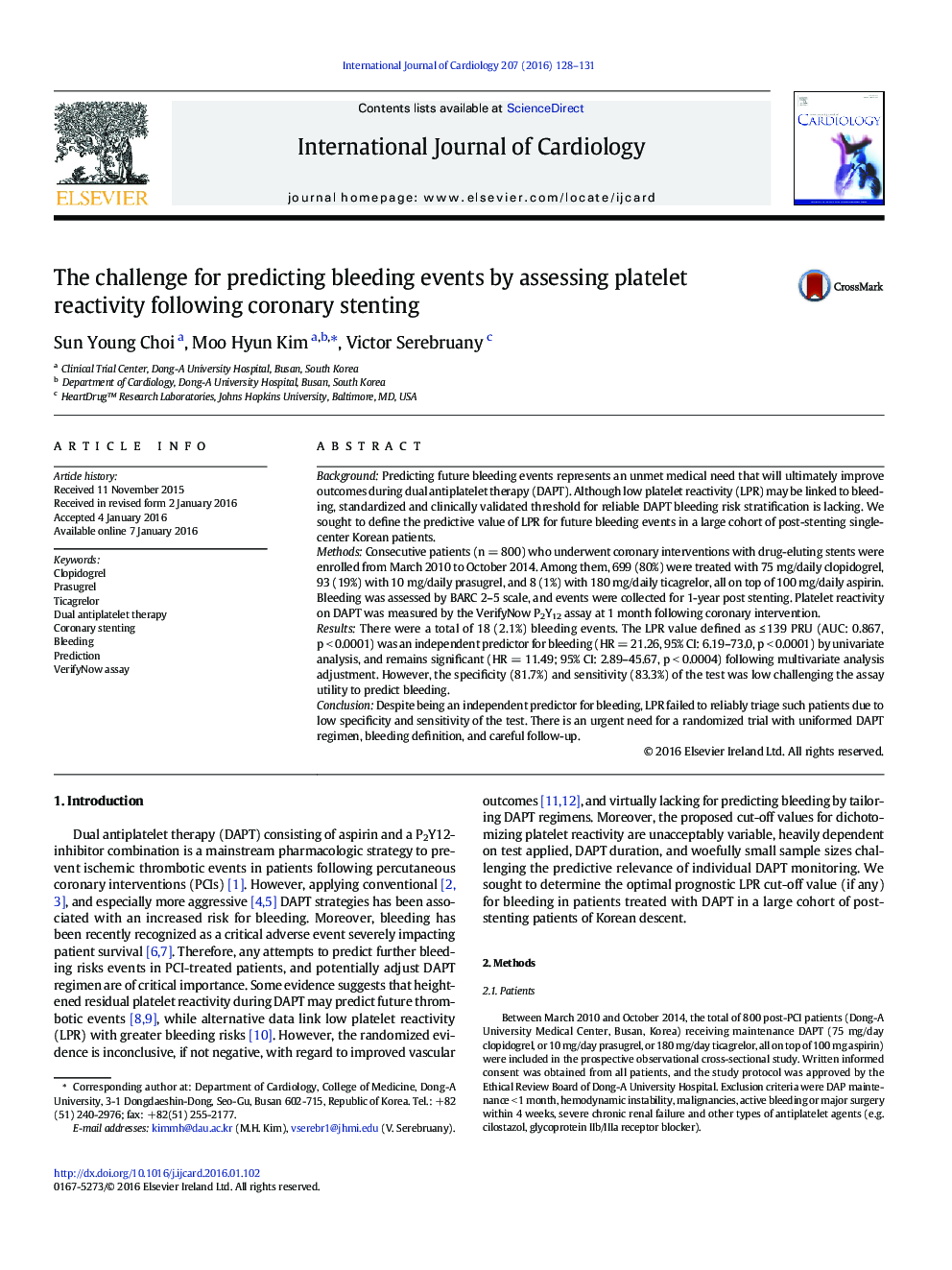| Article ID | Journal | Published Year | Pages | File Type |
|---|---|---|---|---|
| 5964853 | International Journal of Cardiology | 2016 | 4 Pages |
BackgroundPredicting future bleeding events represents an unmet medical need that will ultimately improve outcomes during dual antiplatelet therapy (DAPT). Although low platelet reactivity (LPR) may be linked to bleeding, standardized and clinically validated threshold for reliable DAPT bleeding risk stratification is lacking. We sought to define the predictive value of LPR for future bleeding events in a large cohort of post-stenting single-center Korean patients.MethodsConsecutive patients (n = 800) who underwent coronary interventions with drug-eluting stents were enrolled from March 2010 to October 2014. Among them, 699 (80%) were treated with 75 mg/daily clopidogrel, 93 (19%) with 10 mg/daily prasugrel, and 8 (1%) with 180 mg/daily ticagrelor, all on top of 100 mg/daily aspirin. Bleeding was assessed by BARC 2-5 scale, and events were collected for 1-year post stenting. Platelet reactivity on DAPT was measured by the VerifyNow P2Y12 assay at 1 month following coronary intervention.ResultsThere were a total of 18 (2.1%) bleeding events. The LPR value defined as â¤Â 139 PRU (AUC: 0.867, p < 0.0001) was an independent predictor for bleeding (HR = 21.26, 95% CI: 6.19-73.0, p < 0.0001) by univariate analysis, and remains significant (HR = 11.49; 95% CI: 2.89-45.67, p < 0.0004) following multivariate analysis adjustment. However, the specificity (81.7%) and sensitivity (83.3%) of the test was low challenging the assay utility to predict bleeding.ConclusionDespite being an independent predictor for bleeding, LPR failed to reliably triage such patients due to low specificity and sensitivity of the test. There is an urgent need for a randomized trial with uniformed DAPT regimen, bleeding definition, and careful follow-up.
